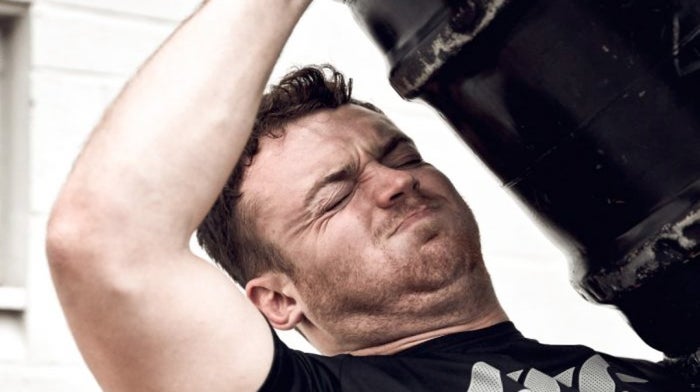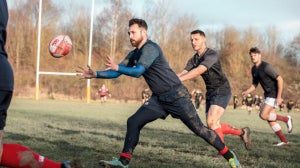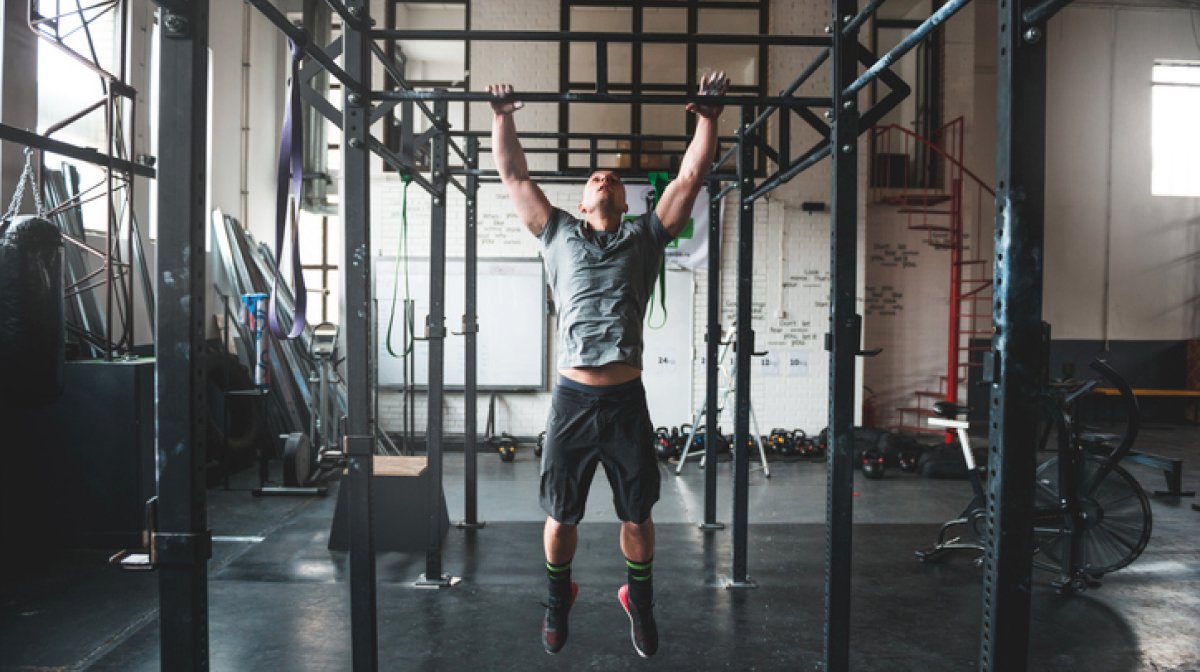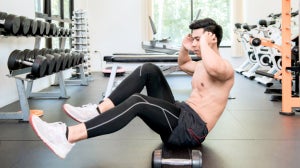
Ball skills aside, sheer physical strength is crucial if rugby players are to perform successfully on the pitch. Scrummaging, mauling and fighting for possession are among the areas where strength – and good technique – is vital. It is for this reason that many clubs have established weights rooms to allow players to develop their strength. There is, however, more to the story; rugby is not about strength alone.
Too often players train without appropriate supervision and will utilise exercises that focus on individual muscle groups, working them in isolation and often to the exclusion of other important groups. They do not keep proper records and do not monitor their progress. Training in this way has limited benefits and increases the risk of injury.
Supervised training that encourages correct technique and movement along with monitoring is essential if these problems are to be avoided and the full benefits of a weights regime are to be realised. Only then can players safely develop the power they need to be effective at match time.
Why power is important:
It cannot be denied that strength is important in rugby. But given that the game requires a lot of short bursts of strengths, the complete player needs power. To reach your full athletic power potential you need to improve on both strength and speed. It is power that allows a player to break a tackle, lift a lineout jumper or clear opponents out of a ruck. Power comes from strength applied at speed, a concept known as Rate of Force Development (RFD). The higher your RFD the more power you can produce, so your training should target your RFD.In rugby, there are a number of power movements. Lifting at lineouts, the shove at scrum time and the tackle are a few. But while these are one off movements, players have to repeat them often, usually in quick succession during a single passage of play. That’s why power training must reflect the need for repeated power movements. Weight training often focuses on maximum lifts, which would only help you train one element of your RFD.Power training doesn’t focus on quantity. Good power training depends on quality and intensity to produce the best results. The largest benefit comes from performing power lifts early in the training session, before the body gets tired. Of course you should always start with a proper warm up and stretching session. Follow your power lifts with fatiguing core exercises .
Using a power training programme will increase players’ speed, acceleration and explosive movement. Contrary to popular belief, athletes will not put on weight or find their mobility impaired by power training. The training techniques used will also improve the player’s resistance to rotational and lateral forces on joints, to which they are subjected during a game, so helping to keep the risk of injury to a minimum.

How to train strength and power for rugby:
Training for rugby must reflect the needs of the game. Ordinary weights sessions in the gym might build muscle but they don’t imitate reality. You don’t use individual muscles in a rugby scrum or a tackle. Weights have a place in fitness programmes, but for rugby you need something extra. The training methods below are proven to be among the most effective for rugby players.Functional training – Functional training is a multi-joint activity designed to develop balance, stability and coordination. The exercises are usually performed standing. This reflects the demands of the game, as the body must provide stability during an action. Gym machines can’t help develop stability so it must be learned through exercise. Functional training replicates match conditions by performing exercises on an unstable surface. Exercises can be on jelly discs, foam, or on one leg. All this improves balance and coordination. It also helps to reduce injuries as players improve body control.
Supersets – In essence, supersets are normal sets exercising one muscle group performed with no break. Because of the rapid onset of fatigue, they allow you to work the muscle group to exhaustion quicker and with less weight. Alternatively, you can work one muscle group for a set and then immediately work the opposing group. Continue this until you complete the required number of sets. This second method allows you to complete your workout faster.
Pyramids – Pyramids are performed by doing high repetition with low weight and then increasing the weight while lowering the repetitions for successive sets, or vice versa. Pyramid training is a proven method for adding strength and bulk.
Plyometric training – Plyometric training is an extension of power training, designed to give greater gains than weight training alone. The exercises put great strain on the muscles, joints and bone. They are physically very challenging and should only be included in the programmes of well-conditioned athletes. Plyometric training is not suitable for occasional trainers or for youngsters who are still growing.
Plyometric exercises for power
Plyometric exercises target the fast-twitch muscle fibres that are crucial to explosive strength. They are the driving force behind rapid, powerful movements like jumping and sprinting.They comprise two phases:• Eccentric contraction – a high-speed contraction and lengthening of the muscles that occurs when the muscle acts as a brake against gravity. For example, when you lower yourself to the ground in a push-up. This creates extreme tension in the muscle and is followed immediately by the next phase.
• Concentric contraction – where the muscle contract and shortens, as in the upward movement of a push-up. (In plyometric push-ups the force should be enough to lift you off the floor).
As a general rule, you should allow around 48 hours between plyometric sessions to ensure proper recovery. Your session will depend on your fitness level, the difficulty of the exercises and your objectives. A typical plyometric session should comprise four to six exercises, with two or three sets of each with three to 10 repetitions in each set.Allow two or three minutes for recovery between sets. Good form and intensity are very important, so if fatigue is having an adverse effect, it is time to stop. Plyometric training must be monitored. Though the conditioning will help prevent on-field injuries, there is an increased risk of injury during training due to the intense repetitive movements that place enormous stress on the joints and tendons.
In summary:
Improving your strength and power will improve your performance on the field, and reduce the risk of injuries. It is important to remember, however, that you should ensure that you train safely and follow a programme that allows you to progress at an appropriate pace.
You will need to prepare for the long haul, as you will not see any significant gains in the short term. You should always train with proper supervision for safety and to track progress. A good training programme and the right commitment on your part will see you achieve lasting results. Not only will you become a better player, but you will also enjoy the game more.

Related Articles








